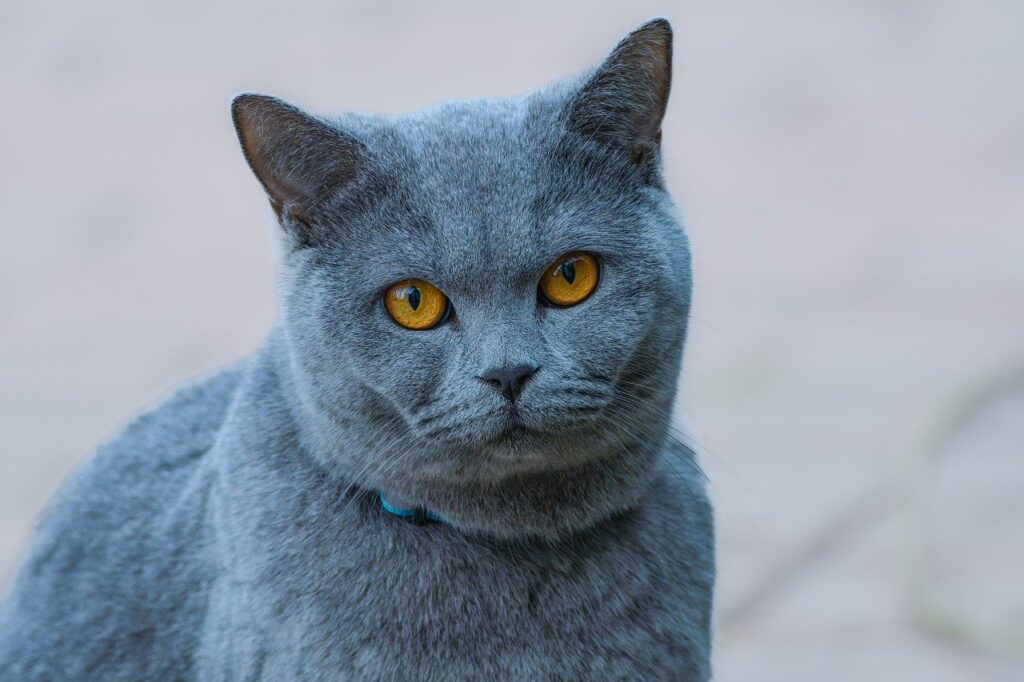As your feline friend ages, their grooming needs change. Senior cats can have a harder time maintaining their fur and claws, which means they need a little extra help from you. By understanding their specific needs and employing gentle techniques, you can keep your senior cat comfortable, happy, and looking their best.
In this article, we’ll explore the special considerations for grooming senior cats and share some gentle techniques that will make the process smoother for both you and your beloved pet.
What are the most common grooming challenges faced by senior cats?
One of the most common grooming challenges faced by senior cats is decreased flexibility. As cats age, they often develop arthritis or other joint issues that limit their ability to groom themselves effectively. This can lead to matted fur, particularly in hard-to-reach areas like the back and hindquarters. Senior cats are also more prone to skin conditions such as dryness, flakiness, and increased sensitivity. These conditions can make grooming uncomfortable or even painful for them, requiring a gentler approach and specialized grooming products to avoid irritation.
Dental issues are another significant challenge. Older cats often suffer from dental diseases, which can make grooming behaviors like licking and chewing painful. This not only affects their ability to clean themselves but also impacts their overall health and well-being. Weight changes, either loss or gain, are common in senior cats and can complicate grooming. Overweight cats may struggle to reach certain areas, while underweight cats might have less muscle mass and fat, making their skin more prone to injury during grooming.
Vision and hearing impairments can also pose challenges. Senior cats with diminished senses may become more anxious or stressed during grooming sessions, requiring a calm and patient approach to help them feel secure and comfortable. Finally, senior cats often have a weakened immune system, making them more susceptible to infections and parasites. Regular grooming is essential to monitor for signs of health issues, but it must be done carefully to avoid causing any harm or stress to the cat.
Which grooming tools are best suited for senior cats?
One of the most essential grooming tools for senior cats is a soft-bristle brush. As cats age, their skin becomes more sensitive and prone to irritation. A soft-bristle brush is gentle enough to avoid causing discomfort while effectively removing loose fur and preventing matting. A grooming glove can be particularly beneficial for senior cats. These gloves have rubber or silicone tips that gently massage the cat’s skin while removing loose fur. The glove’s design allows for a more natural petting motion, which can be soothing for older cats who may be less tolerant of traditional brushes.
Using a fine-toothed comb is crucial for managing tangles and mats, especially in long-haired senior cats. This tool can help gently work through knots without pulling on the cat’s delicate skin. Look for combs with rounded tips to further minimize any potential discomfort. Senior cats often have more brittle nails that can easily split or crack. A pair of high-quality, sharp nail clippers designed specifically for cats is essential. These clippers should have a safety guard to prevent over-cutting and causing injury.
A flea comb is another valuable tool, particularly for senior cats who may have a weakened immune system and are more susceptible to flea infestations. This fine-toothed comb can help detect and remove fleas and their eggs, providing relief and preventing further issues. Senior cats may also benefit from a grooming spray or waterless shampoo. These products can help clean and condition their fur without the stress of a full bath, which can be particularly taxing for older cats. Choose a formula that is gentle and free from harsh chemicals.
Lastly, consider using ear-cleaning wipes or a gentle ear-cleaning solution. As cats age, they can become more prone to ear infections and wax buildup. Regularly cleaning their ears with a safe, vet-approved product can help maintain their ear health and comfort.
How can grooming routines be adapted for cats with arthritis?
Grooming routines for cats with arthritis need to be adapted to minimize discomfort and accommodate their limited mobility. One key adjustment is to use softer brushes and grooming tools. Soft-bristled brushes and grooming gloves can be gentler on their sensitive joints and muscles, reducing the risk of causing pain during grooming sessions. It’s important to create a comfortable and supportive environment for grooming. Use a soft, padded surface where the cat can lie down comfortably. This helps to alleviate pressure on their joints and makes the grooming process more pleasant. Additionally, ensure the grooming area is quiet and free from distractions to keep the cat calm and relaxed.
Shorter, more frequent grooming sessions are beneficial for arthritic cats. Instead of long grooming sessions that can be tiring and uncomfortable, break them into shorter intervals. This approach helps to maintain the cat’s coat without causing undue stress or pain. Regular grooming also helps to prevent matting and skin issues, which can be more common in senior cats. Pay special attention to areas that may be more difficult for the cat to groom themselves, such as the back, hindquarters, and underbelly. These areas can become matted or dirty if not properly maintained. Gently brush and clean these spots, being mindful of any signs of discomfort or pain. If the cat shows signs of distress, take a break and try again later.
Consider incorporating massage techniques into the grooming routine. Gentle massages can help to improve circulation, reduce stiffness, and provide comfort to arthritic cats. Use slow, circular motions with your hands, focusing on areas that seem particularly stiff or sore. Always be gentle and observe the cat’s reactions to ensure they are comfortable. Consult with a veterinarian for additional advice and support. A vet can provide specific recommendations based on the cat’s condition and needs. They may suggest pain management options, such as medications or supplements, that can help alleviate discomfort and improve the cat’s overall quality of life. Regular check-ups are essential to monitor the cat’s health and adjust grooming routines as needed.
| Massage Area | Technique | Benefits | Notes |
|---|---|---|---|
| Shoulders | Slow, gentle circular motions | Reduces muscle tension, improves circulation | Monitor the cat’s comfort level |
| Back | Long, smooth strokes | Relieves stiffness enhances relaxation | Avoid any pressure on the spine |
| Hips | Light kneading motions | Alleviates discomfort improves flexibility | Be particularly gentle if arthritis is present |
| Legs | Soft, upward strokes | Stimulates blood flow reduces swelling | Consult a vet for best practices |
| Neck | Gentle tapping motions | Promotes relaxation, eases tension | Avoid any pressure on sensitive areas |
What signs of skin issues should owners look for in older cats?
One sign of skin issues in older cats is excessive scratching or grooming. If a senior cat is constantly licking, biting, or scratching a particular area, it could indicate irritation, allergies, or an underlying skin condition. Owners should also look for bald patches or thinning fur. These can be signs of over-grooming due to discomfort or a symptom of a more serious condition such as hyperthyroidism or skin infections. Redness or inflammation on the skin is another indicator of potential problems. This can be caused by allergies, infections, or parasites like fleas and mites.
Scabs or crusty areas on the skin can signify that a cat has been scratching or biting at irritated spots. These can lead to secondary infections if not treated promptly. Owners should be aware of any unusual lumps or bumps on their cat’s skin. While some may be benign, others could be indicative of tumors or cysts that require veterinary attention. Dry, flaky skin, often referred to as dandruff, can be a sign of poor nutrition, dehydration, or underlying health issues. It is particularly common in older cats whose skin may become less elastic and more prone to dryness.
Changes in skin color, such as darkening or yellowing, can also be a red flag. These changes might indicate liver disease, bruising, or other systemic health problems that need to be addressed.
How often should senior cats be groomed to maintain their health?
Senior cats generally require more frequent grooming than younger cats due to their reduced ability to groom themselves effectively. Regular grooming sessions help to remove loose fur, prevent matting, and keep their skin healthy. For most senior cats, grooming should be done at least once a week, but this can vary depending on the cat’s coat type and health condition. Long-haired senior cats may need grooming sessions several times a week to prevent tangles and mats, which can cause discomfort and skin issues. Short-haired cats, on the other hand, might only need grooming once a week. However, it’s essential to monitor each cat individually and adjust the grooming frequency based on their specific needs.
In addition to regular brushing, senior cats may benefit from periodic baths, especially if they have difficulty grooming themselves due to arthritis or other mobility issues. Bathing should be done with a gentle, cat-specific shampoo and should not be too frequent to avoid drying out their skin. A bath every few months is usually sufficient unless the cat has specific medical conditions that require more frequent cleaning. Senior cats also need regular nail trimming, as they may not wear down their claws as effectively as they did when they were younger. Overgrown nails can lead to discomfort and potential injury. Nail trimming should be done every few weeks, but the exact frequency will depend on how quickly the cat’s nails grow.
Dental care is another crucial aspect of grooming for senior cats. Regular brushing of their teeth can help prevent dental diseases, which are common in older cats. Ideally, their teeth should be brushed daily, but even a few times a week can make a significant difference in their oral health. Finally, it’s important to check and clean the ears of senior cats regularly. Ear cleaning should be done as needed, typically once a month, to prevent the buildup of wax and debris, which can lead to infections. Always use a vet-recommended ear cleaner and consult your veterinarian if you notice any signs of ear problems.
Conclusion
As your cherished feline friend enters their golden years, grooming isn’t just about keeping them looking good—it’s about contributing to their overall health and happiness. By understanding the unique needs of senior cats, choosing the right tools, and adapting your approach, you can make grooming a gentle, soothing experience for both of you. Always be vigilant for signs of discomfort or skin issues and don’t hesitate to consult your vet for personalized advice. With patience, love, and the right techniques, you can ensure your senior cat remains comfortable, clean, and content in their twilight years.



